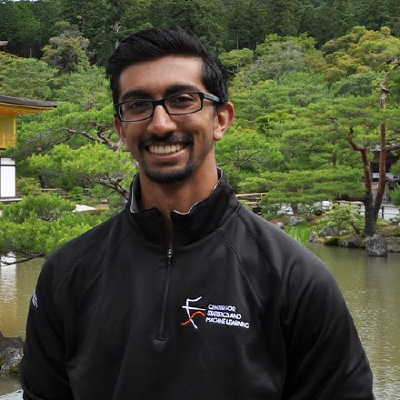As explored previously, the key determinants of success, more so than intelligence, are a selection of what to work on and persistence in its pursuit. Concretely, however, how does one “pursue” a field? In technical domains, this takes the form of selecting projects. In doing so, one converts the often loftily stated goals of contributing to a field into actionable work. Yet, the expansiveness of a field often lends itself to many nooks that could seemingly form the basis of a project, which leads to the question of how one should select amongst the infinite collection of projects the one to pursue.
This selection problem can be viewed as an instance of a reinforcement learning problem, where the state is one’s internal abilities and the external state of the field, and the action is the selection of a problem. In RL, the value of an action is the sum of both its immediate returns and the value of the state in which it leaves the agent. In our context, the value of a project is then both in its immediate value and in how well it sets one up to pursue future projects.
Importantly, however, one does not a priori know the reward structure of projects. Before addressing this problem, let us define a concrete notion of “reward.” In research, a project of high reward can be quantified as its total future citation count, but this metric is merely the quantification of the true value of such work: the reframing of the mindsets of others. If a work gets others to think differently, it is a valuable contribution. This is not to say all other works are pointless: after all, many works of a more tried pattern must accumulate before such intellectual leaps are possible. Thus, viewing the cumulative set of knowledge as a tree with any given discovery being a node in this tree, the value of a discovery is the discounted sum of the values of the subtree rooted at that node.
This infinitely expansive tree of knowledge underlying the rewards is precisely the source of the difficulty in assessing reward structures: one cannot know how important a work will be until the future plays out. Yet, one must make this selection now. For this reason, people will develop an implicit estimate of these rewards that they will choose projects against. This proxy is precisely what we colloquially call a researcher’s “taste”: it is their estimated reward structure, and the “quality” of someone’s taste is the correlation of this estimate with the true rewards. Researchers with good taste will pursue projects with seemingly uncanny prescience, with the rest of the field only subsequently realizing the significance of such a line of work.
Given its importance, how does one develop a refined taste? Typically, in one of two ways: by completing projects and through osmosis. Importantly, this means that taste is not purely individual: it exists in organizations. An organization’s taste is the correlation of its collective sense of the values of particular problems with their true values. In its best form, an organization will draw together a diverse collection of intelligent people, directed toward a particular area. The diversity of members helps to decorrelate issues in assessing project value.
The significance of intelligence is more subtle; in fact, given that intelligence is purely the capacity to acquire new skills, it is unclear why that would have any significance in this context. The reason is that intelligence has correlates of significance in this realm. In particular, capacities for abstraction and, thus, problem solving are immediate corollaries of intelligence. This allows intelligent people to take on projects of greater difficulty and, in turn, develop a well-attuned taste for such projects.
A natural question is why projects of greater difficulty should have higher value. There is no inherent reason why this correlation should exist; it is, instead, an emergent artifact of the broader societal context. Given that humans seek to maximize collected value, the easier a project, the more likely that another opportunistic researcher would have already come along and seized such an opportunity. The difficulty of an endeavor, therefore, merely acts to protect value if it were to exist, analogous to the notion of an economic moat. This, in turn, means that the expected value of easier opportunities is lower than that of more difficult opportunities as a result of the free market of scientific research, rendering taste in difficult problems, and thus intelligence, of importance.
Developing a taste and, thus, the potential for impact is best pursued by optimally identifying organizations: finding an organization that is a magnet for intelligent, ambitious people is one of the most important choices one can make.

Comments